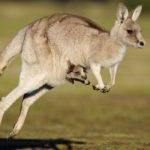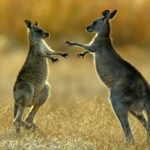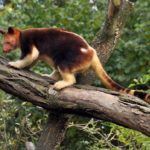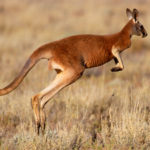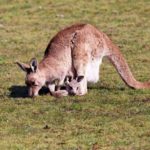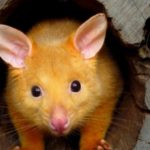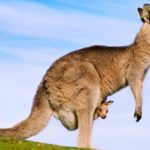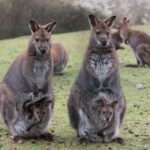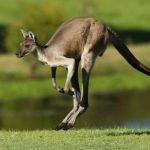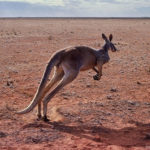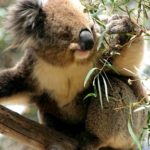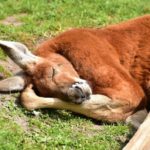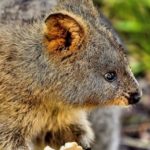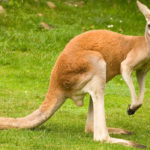Kangaroo – description and lifestyle of a kangaroo
 There is probably no person who does not know that kangaroos live in Australia and that the kangaroo is considered a symbol of Australia. How many years the kangaroo lives on the sunny continent is not known exactly, but the Europeans basically found out about it not so long ago, in the middle of the eighteenth century, when James Cook came to Australia.
There is probably no person who does not know that kangaroos live in Australia and that the kangaroo is considered a symbol of Australia. How many years the kangaroo lives on the sunny continent is not known exactly, but the Europeans basically found out about it not so long ago, in the middle of the eighteenth century, when James Cook came to Australia.
This animal certainly attracted attention. Not only is the kangaroo outwardly different from other animals, it has an unusual way of moving.
Kangaroo, like most animals in Australia, is marsupial. This means that the baby kangaroo carries its babies that are born underdeveloped in a bag formed by folds of skin on the stomach. But this is not all the differences between the Australian kangaroo and other animals; its peculiarity is its mode of movement. Kangaroos move in leaps, almost in the same way as grasshoppers or jerboas known to us do. But the grasshopper is an insect, and the jerboa is a small rodent, for them it is acceptable. But for a large animal to move, making jumps, and at the same time rather large, this is not likely from the point of view the expenditure of forces. After all, an adult kangaroo can jump in length up to 10 meters, and in height up to almost 3 meters. This is what kind of force is needed to launch a body weighing up to 80 kg in flight. Namely, the gigantic kangaroo weighs so much. And in such an unusual way, a kangaroo can reach speeds of up to 60 km or more. But moving back is difficult for him, his legs are simply not adapted for this.
By the way, the emergence of the name “kangaroo” itself is also still not clear. There is a version that the first travelers to Australia, when they saw this jumping monster, asked the locals: What is his name? To which one of them replied “I don’t understand” in his language, but it was “gangurru” that sounded, and since then this word has been assigned to them as their name. Another version says that the word “gangurru” in the language of one of the indigenous tribes of Australia means this animal. There is no reliable data on the origin of the name of the kangaroo.
Outwardly, the kangaroo looks unusual for a European. Its upright stance, strong, muscular hind legs and short, usually bent forepaws make it look like a boxer. By the way, in ordinary life, these animals also show boxing skills. When disassembling among themselves or defending themselves from enemies, they strike with their front paws, just like boxers do in battle. True, quite often they also use long hind legs. This is akin to Thai boxing. In order to inflict a particularly strong blow, the kangaroo sits on its tail.
But imagine the impact force of the hind leg of this monster. With one blow, he can easily kill. In addition, he has huge claws on his hind legs. If we take into account that in Australia the largest land predator is the Wild Dog Dingo, which in size can in no way be compared to a kangaroo, it becomes clear why the kangaroo has practically no enemies. Well, maybe just a crocodile, but where kangaroos usually live, there are almost no crocodiles. True, the real danger is a python that can gobble up something and more, but it is certainly a rarity, but nevertheless, here is the fact when the python dined a kangaroo.
Another feature of the kangaroo is that they belong to marsupials, and as a result they grow their offspring quite peculiarly. A kangaroo is born very small, not fully developed, and itself is not able to move and eat. But this is compensated by the fact that the kangaroo female on her stomach has a bag formed by a fold of skin. Here, in this bag, the female places her tiny baby, and sometimes two, where they grow further, especially since the nipples through which he feeds are in the same place. All this time, one or two underdeveloped cubs are spent in the mother’s bag, with their mouth tightly attached to the nipples. Kangaroo mother masterfully controls the bag with the help of muscles. For example, she can “lock” a cub in her at the moment of danger. The presence of the baby in the bag does not bother the mother much, and she is free to jump on. By the way, the milk that the kangaroo feeds changes over time. While the baby is tiny, it contains special antibacterial components produced by the mother’s body. As it grows, they disappear.
After leaving infancy, during which mother’s milk feeds, all kangaroos become vegetarians. They feed mainly on the fruits of trees and grass; some species eat insects or worms in addition to greenery. Usually they feed in the dark, because of this the kangaroo is called twilight animals. These mammals are kept in packs. They are very careful and do not come close to the person. However, there are cases when brutal kangaroos drowned animals and attacked people.


